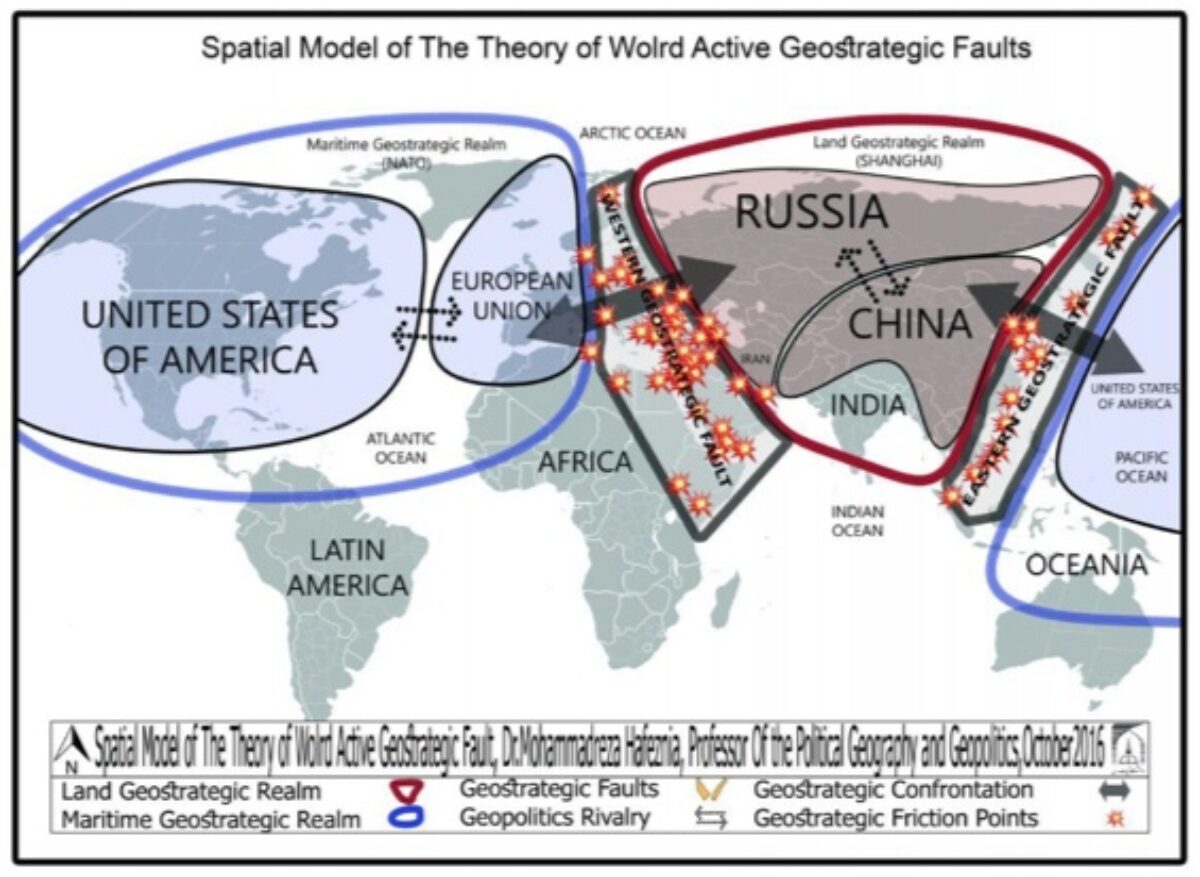Active Geostrategic Faults in the World
In the frame of the paradigm of competition between maritime (sea) and land strategies there are two grate geostrategic faults in global scale located at the West and East of the Eurasia that seems are the origins of current policies in the world. In fact, the global geostrategic confrontations are located in the onshore parts of the Eurasia. These confrontations are limited from East to onshore gap-line between land of Eurasia and Pacific Ocean, and from West to the gap-line between Eurasia and Europe and Africa. It looks that, European states and the USA and the maritime strategy allies have surrounded the land of Eurasia, and challenge the land strategy and its allies and enforce them to the spatial contraction. In opposite, Russia and China as the main actors of the land strategy try to cope with this challenge, and reach to the spatial expansion.
The global powers are in the two sides of these faults. It means that in the East gap-line of Eurasia the USA is in contrast with Russia and China, and in the West gap-line of Eurasia the USA and NATO are in geostrategic confrontation with Russia. These faults have geopolitical nature and philosophy. Because the actors of the both sides try to increase their geopolitical and geographical space in the global level, and also try not to allow the rivals to enter to their spaces. The process of their spatial expansion has two faces:
1. Geographical: increase in territory using dominance, annexation and occupation methods.
بازدید کل: 374 , بازدید امروز: 1

دکتر محمدرضا حافظ نیا متولد۱۳۳۴ در روستای خراشاد شهرستان بیرجند، و استاد پایه 44 گروه جغرافیای سیاسی دانشگاه تربیت مدرس است. تخصص ایشان جغرافیای سیاسی و ژئوپلیتیک است. وی در سال ۱۳۶۹ به عنوان اولین فارغ التحصیل دوره های دکتری دانشگاه تربیت مدرس موفق به اخذ مدرک دکتری در رشته جغرافیای سیاسی شد.


0 نظرات